Golfstead is reader-supported. When you buy through links on the site, we may earn an affiliate commission at no extra cost to you. Our affiliations include, but are not limited to, the eBay Partner Network and Amazon Associates.
Your ability to hit the ball solidly off the tee, send it a long way, and (hopefully) find the fairway is essential to your success as a golfer.
As a beginner, you’re still learning how to make decent contact with the ball, and with the driver, this can be very challenging initially. Thus, generally speaking, most beginners will benefit greatly from a large, forgiving face, high launch properties, and a draw bias to correct slices.
Also, because beginners are building up their golf muscles and often have a slower swing speed, they tend to benefit from lightweight configurations that enable an easier, faster swing.
However, there are countless options on the market, which can make the process of choosing the best driver for you feel difficult and overwhelming. Fortunately, you’ve come to the right place.
In this guide, we’ll review and compare our picks for the best golf drivers for beginners across a range of different brands. These drivers may have been released for the most current golf season or any year prior.
Note: Golfstead has tested and/or conducted in-depth research into all of the products featured in this guide. Our editorial process for these rankings takes into account a mix of many factors which may include performance, reliability, usability, value for money, cost, and the general consensus from other users of the product. The list that follows may be reassessed or updated over time. We do not guarantee that other users will have the same or similar experience with the products as described on this page.
Our Top Picks For Drivers For Beginners
Based on our own testing, research, and experience, here are our top selections:
- Callaway Rogue ST MAX D Driver
- PXG 2022 0211 Driver
- TaylorMade Stealth 2 HD Driver
- Cobra 2024 AIR-X Straight Neck Driver
- PING G430 SFT Driver
- Titleist TSR1 Driver
- Srixon ZX5 Mk II Driver
- Honma T//World GS Driver
1. Callaway Rogue ST MAX D Driver
If I had to recommend one driver for beginners from one of the most recognized brands in golf, it would be the Rogue ST MAX D by Callaway.
This thing has incredible forgiveness, with high MOI, great distance, easy launch, solid feel, and a modern look. Its stretched profile at address, more upright lie, and reduced face progression promote even more of a draw bias than the standard Rogue ST MAX.
The Rogue ST MAX D driver has a lot going for it. Its key technologies are:
- Tungsten Speed Cartridge: a tungsten bar (20g) placed in the club’s sole shifts the CG low and deep in the head, resulting in much better mis-hit stability.
- Jailbreak A.I. Speed Frame: vertically and horizontally connects the crown and sole to produce more ball speed and torsional stability towards the heel and toe.
- A.I. Flash Face: designed through machine learning and made of high-strength titanium, the wave-like Flash Face produces faster ball speeds over a large area of the face, improves spin robustness, lowers spin, and increases launch.
- Titanium Unibody Construction: lowers the CG for a higher launch and adds stability.
- Triaxial Carbon Crown: allows for weight savings that are redistributed low for more forgiveness and additional draw bias.
The Rogue ST MAX D driver comes stock with the Mitsubishi TENSEI AV Blue (55/65), Fujikura Ventus Blue Non-Velocore (50/60), and Project X Cypher Black 50 graphite shafts. The stock grip is the Golf Pride Tour Velvet 360. Custom options are available.
| Lofts | 9°, 10.5°, 12° |
| Lie | 60° |
| Length | 45.75″ |
| Swing Weight | D3 |
Pros
- a game-changer for golfers who struggle with a slice
- large sweet spot
- some golfers see huge distance gains
- decently lightweight feel
- terrific sound & feel at impact
- easy launch
Cons
- the shape of the Speed Cartridge will put off some
- strong draw bias won’t suit everyone
- doesn’t include adjustment tool
Final Thoughts
The Rogue ST MAX D driver is perfect for the beginner who struggles with a slice (which is most), needs help getting the ball airborne, and needs a lot of forgiveness to hit good shots consistently. It’s packed with the most cutting-edge technologies that the industry has to offer.
The additional draw bias helps golfers eliminate their right miss and stay in the fairway as much as possible. If you don’t want or need so much draw bias, consider the standard Rogue ST MAX.
2. PXG 2022 0211 Driver
PXG is a relatively new golf equipment manufacturer that was founded in 2014 and has quickly gained a foothold in the industry. It is backed by a slew of PGA Tour professionals including Zach Johnson and James Hahn.
Their golf clubs are normally very expensive, but in the case of the 2022 0211, PXG was able to offer quality and cutting-edge technologies at a surprisingly affordable cost — about 50% less expensive than the big names.
This driver is built to be an excellent all-around performer, whether it’s distance, forgiveness, launch, sound or feel. These are all traits that a beginner golfer would love to have. The key technologies are:
- Robotic Polishing: this high-precision process optimizes face thickness and curvature at every point so that mis-hits end up as close as possible to the target.
- Ti412 Speed Face: the face is made of Ti412 titanium alloy which supports maximum face deflection and spring at impact.
- Variable Face Thickness: consists of a special geometry that reduces mass where possible yet maximizes ball speeds across the face.
- High Modal Optimization: modal analysis was conducted to determine the ideal frequency range that leads to an even better sound and feel than the previous 0211 model.
PXG offers a wide selection of shafts for the 2022 0211, some at no additional cost and some at extra cost. The stock grip is the PXG Z5 Black.
| Lofts | 9°, 10.5°, 12° |
| Lie | 59° |
| Length | 45.5″ |
| Head Mass | 203g |
Pros
- outstanding value for money
- big distance
- extremely forgiving
- acoustics are improved over the 2021 0211
- powerful feel at impact
Cons
- sound is still a bit unappealing to some
Final Thoughts
PXG has demonstrated through tests that the 2022 version of the 0211 driver is faster, longer, spins less, and provides more control than the previous year’s model. It really is a steal, and PXG intends for it to be that way in the hopes that you’ll give them more business down the road!
This accessible driver has great ratings. It’s perfect for beginners who want to enjoy performance from a top equipment manufacturer at a low price.
3. TaylorMade Stealth 2 HD Driver
TaylorMade is a top golf equipment brand that has developed high-performing drivers for decades.
Their Stealth 2 HD driver features the same improved Carbon Twist Face and carbon-focused construction of the standard Stealth 2, but the Inertia Generator and center of gravity are shifted towards the heel, producing a draw bias that will help fight a slice.
The driver is the highest-launching and most forgiving model in the Stealth 2 line, and it has nearly double the amount of carbon in its construction compared to the original Stealth HD.
Key technologies are:
- New 60X Carbon Twist Face: ball speed and forgiveness on off-center strikes is improved with an enhanced version of Inverted Cone Technology (ICT), and the face is slightly lighter
- Carbon Reinforced Composite Ring: this runs around the head of the driver, allowing for weight savings that are used to shift the CG back for higher MOI
- Internal Stiffening Ribs: used to finely tune acoustics for a lively and powerful sound
- Inertia Generator: seen in previous models including the M6, SIM and SIM2, this unique sole shape increases aerodynamic club head speed and shifts the CG back for increased stability
The stock shaft is the Fujikura Speeder NX Red, and the stock grip is the Golf Pride ZGRIP Plus2. An FCT adjustable loft sleeve is included.
| Lofts | 9°, 10.5°, 12° |
| Lie | 58°-62° |
| Length | 45.5″ |
| Swing Weight | D2 |
Pros
- robust draw bias
- uber forgiving
- excellent clubhead speed
- easy to launch
- feel is more muted and sophisticated than the Stealth HD
Cons
- adjustment tool not included
- expected a little more ball speed
Final Thoughts
With the Stealth 2 HD driver, TaylorMade puts their best foot forward.
This driver is long, forgiving, and has superb sound & feel. Because of the draw bias and higher launch, beginner golfers can swing with the confidence that their big stick is giving them the best chance of success.
4. Cobra 2024 AIR-X Straight Neck Driver
The AIR-X is Cobra’s highly praised lightweight offering for slower swingers. Not only does the stock shaft and grip have light weight in mind, but the driver itself has a lightweight construction which helps promote a faster, more effortless swing.
In addition to the extremely lightweight design at just 290g, the AIR-X driver is also engineered for fast ball speeds across the face and a draw bias. The 2024 model of the AIR-X (AIR-X 2) improves upon the original 2022 version with new H.O.T. Face technology designed to give a boost to mis-hit forgiveness.
The key features of the 2024 AIR-X Straight Neck driver are:
- a lightweight construction consisting of a lightweight head, shaft and grip
- an A.I. H.O.T. Face that better optimizes spin and increases ball speeds across the face
- heel weighting to help mitigate slices
- no offset for a traditional look at address
The 2024 AIR-X Straight Neck driver comes stock with the Cobra Ultralite 40 graphite shaft, and the stock grip is the Lamkin EPDM R.E.L. Black STD 58R.
| Lofts | 9.5°, 10.5° |
| Lie | 61° |
| Length | 46″ |
| Swing Weight | D1.5 |
Pros
- great distance and accuracy
- effortless feel throughout the swing
- easy to get the ball airborne
- healthy draw bias for fighting slices
Cons
- might be too light for some
Final Thoughts
The Cobra 2024 AIR-X Straight Neck is a nice straightforward driver. Its light weight makes it ideal for beginners who are just starting to build up their golfing muscles, and its launch, distance and forgiveness are better than most other lightweight drivers.
With the 2024 model, Cobra essentially brought in the H.O.T. Face technology found in their AEROJET driver. This gives a nice little boost to ball speeds across the face compared to the original AIR-X.
There’s also an Offset variant of the 2024 AIR-X which provides even more draw bias.
5. PING G430 SFT Driver
PING is a world-renowned golf equipment manufacturer that was founded in 1959 by Karsten Solheim, a former General Electric engineer. It’s backed by a slew of pros including Bubba Watson, Louis Oosthuizen, and Lee Westwood.
The G430 SFT (Straight Flight Technology) is the draw bias option in PING’s G430 line. A moveable 22g tungsten backweight promotes a right-to-left shot correction of up to 20 yards. Compared to the G425 SFT, the G430 has improved distance and a better impact sound.
Fast ball speeds, high MOI, optimized feel and adjustability are other benefits provided by the G430 SFT. Its key technologies are:
- T9S+ Forged Face: a shallower and thinner variable-thickness face (VFT) generates more face flexion at impact and thus increases ball speeds
- Spinsistency: modifies the roll profile and optimizes face curvature, particularly low on the face, to reduce spin for longer drives
- Straight Flight Technology: a moveable 22g tungsten backweight adds draw bias, with 13 yards of shot correction in the Draw setting and 20 yards in the Draw+ setting
- Internal Ribbing: a new and improved internal rib structure combined with the increased curvature and stiffness of the sole, skirt and crown results in significantly improved sound at impact
- Crown Turbulators: a series of angled aerodynamic ridges on the crown that reduce drag for increased swing speed
Also available is the G430 SFT High Launch (HL) driver. This custom option combines a lighter backweight (11g) with a lighter stock shaft and grip; it’s designed so that golfers with slower swing speeds can boost their clubhead speed and distance.
There is an array of stock shaft options offered with the G430 SFT at no upcharge including (but not limited to) the PING Tour 2.0 Chrome 65, PING Alta CB Black 55, Mitsubishi Kai’Li White 60, and Project X HZRDUS Smoke Red RDX 60.
| Lofts | 10.5° |
| Lie | 58.5° |
| Length | 45.75″ |
| Swing Weight | C9 |
Pros
- plenty of right-to-left shot correction
- better impact sound and distance than the G425 SFT
- can adjust the degree of draw bias
- forgiveness is excellent
Cons
- not as long as the other models in the G430 line
Final Thoughts
The PING G430 SFT driver checks all the boxes for the typical beginner: it offers strong slice correction, it’s long, it’s forgiving, and it’s lightweight but not overly so.
With PING clubs in particular, we do highly recommend a fitting if possible (after you’ve figured out how to make a half decent swing) so that you know what configuration will work best for you. You also might be able to score a really good deal on eBay.
6. Titleist TSR1 Driver
You may think of Titleist as mainly catering to the professional crowd, but this isn’t really true; they also offer plenty more forgiving options that live up to the Titleist standard of quality.
The TSR1 is made of of very lightweight components, allowing golfers with low to moderate swing speeds to generate more speed through the ball and maximize distance. Its new face technology generates even more speed over the previous TSi1 model, and it’s also very forgiving.
The key features of the TSR1 driver are:
- Ultra-Lightweight Design: nearly 40 grams lighter than standard drivers, while still promoting a high launch and big distance.
- Multi-Plateau VFT Face: this new face tech builds the face inward layer-by-layer so that CT (Characteristic Time, a measure of energy transfer to the ball) across the face is nearly constant, thus significantly improving forgiveness.
- Face-Centered CG: the center of gravity of the TSR1 driver is positioned deep and almost perfectly centered to the face, resulting in a higher launch and ball speed.
- Hosel Adjustability: a SureFit hosel with 16 loft/lie combinations allows you to adjust and fine-tune the TSR1 driver to best suit your swing.
The TSR1 driver comes stock with the Mitsubishi MMT SPEEDMESH shaft. The stock grip is the Golf Pride Tour Velvet 360.
| Lofts | 9°, 10°, 12° |
| Lie | 59° |
| Length | 45.75″ |
| Hands | RH/LH |
Pros
- slightly better distance and forgiveness than the TSi1
- effortless launch
- slight draw bias is a nice touch
- modern, sleek aesthetic
- easy for beginners to swing
Cons
- has a relatively narrow appeal
- quite expensive
Final Thoughts
The Titleist TSR1 driver is an ideal choice for people just starting out in golf because of its light weight and easy launch.
However, like the TSi1, the TSR1 doesn’t have as much technological prowess as the other models in the TSR line. If you’re looking for even more forgiveness, we suggest the TSR2.
We should also mention that even if your swing speed is less than 90 mph, you may still have to experiment with the shaft/loft sleeve or even get a fitting in order to get the most out of this driver.
7. Srixon ZX5 Mk II Driver
Many people are familiar with Srixon as one of the top manufacturers of golf balls. It turns out that they make excellent drivers too.
Their ZX5 Mk II driver, which won a gold medal on the 2023 Golf Digest Hot List, is engineered for straight drives and high forgiveness, speed and launch in a confidence-inspiring profile — perfect for those who are new to the game.
Bucking the trend that has developed over the past couple of years, it moves away from the carbon construction of the original ZX5 back towards titanium, which many will appreciate.
The key technologies of the ZX5 Mk II driver are:
- Rebound Frame: adds a second layer of flexibility for even more recoil at impact. The “spring within a spring” dual-flex design delivers unprecedented ball speeds, particularly in the middle of the face.
- Variable Thickness Face: behind the Ti51AF titanium alloy face is a complex thickness pattern that is designed to expand regions of high COR across the face. The end result is improved ball speeds on off-center strikes.
- Star Frame Crown: an internal structure of latticework and ridges allows for an extremely thin titanium crown. This frees up discretionary weight which is redistributed for higher launch and optimal spin.
- Sole Weight: a port on the rear of the sole contains an 8g weight that shifts the CG low and deep for enhanced stability and launch. This port can be swapped in with different weights depending on individual preferences.
- Adjustable Hosel: offers 12 combinations of loft, lie and face angle.
The ZX5 Mk II driver comes stock with the Project X HZRDUS Smoke Red RDX 60/50 graphite shaft. The stock grip is the Golf Pride Tour Velvet 360. Custom options are available.
| Lofts | 9°, 10.5° |
| Lie | 58.5° |
| Length | 45.25″ |
| Swing Weights | D2, D3 |
Pros
- easy launch even for slower swingers
- very forgiving with a slight draw bias
- slightly faster off the face than the previous ZX5
- lots of adjustability
- solid feel & good sound
Cons
- only one stock shaft option
- sole backweights must be purchased separately
Final Thoughts
The Srixon ZX5 Mk II driver does a fantastic job of providing solid game improvement performance with an easy launch, thus suiting many beginner golfers with slower swing speeds.
It doesn’t give you too much of anything, it’s cheaper than other drivers in its class, and it improves on the weaknesses of the original ZX5 driver to deliver better speed across the face.
If you don’t mind going with a brand that is very reputable but nevertheless not as popular as other brands when it comes to golf clubs, the ZX5 Mk II should be at the top of your consideration list.
8. Honma T//World GS Driver
Honma is a Japanese manufacturer that has more than 60 years of craftsmanship and experience under its belt.
Their T//World GS driver is engineered for high speed across the face, forgiveness, adjustability, and a draw bias — everything that the typical beginner would benefit from.
The key technologies of the T//World GS driver are:
- Flip Slot: positioned right behind the face, this maximizes face flexure at impact and reduces spin, thereby increasing ball speed and forgiveness.
- Radial Face: a radial face structure enables dynamic flexion across the face, thus maximizing ball speed on off-center hits.
- Heel Weighting: consisting of a raised keel and weight positioned towards the heel, this promotes a draw bias and increases MOI.
- Thin Titanium Crown: works with the Flip Slot to maintain rigidity and reinforce face flexure at impact.
- Adjustable Hosel: because the hosel does not rotate, the shaft stays aligned through all loft/lie settings.
The T//World GS driver comes stock with Honma’s SPEEDTUNED Graphite shaft. The stock grip is the Honma Tour Velvet.
| Lofts | 9°, 10.5°, 11.5° |
| Lie | 59.5° |
| Length | 45.50″ |
| Swing Weight | D1, D1.5 |
Pros
- good distance
- very forgiving & draw bias is a nice touch
- does everything well
- nice headcover
- fantastic stock shaft
Cons
- limited shaft options
Final Thoughts
Honma may not be a household name in the golf industry, but they make some of the finest products in the world.
Their T//World GS driver is an excellent all-around performer that promotes a straighter ball flight and will appeal to a wide range of golfers. And because it’s a couple seasons old now, you can snag it at a really nice discount.
Buying Guide
There are a ton of drivers on the market, and knowing which one to choose as a beginner isn’t necessarily easy, especially if you’re not sure what to look for. This guide will provide you with the education you need in that regard.
In general, beginners should choose a driver that is highly forgiving, easy to swing, and has good all-around performance.
If you want to find the right driver, here are the most important factors to consider:
1. Forgiveness

Forgiveness is certainly one of the most important factors to consider, especially for a beginner who often makes poor face contact.
Having a degree of forgiveness in your driver is highly beneficial because at these high swing speeds, minor mis-hits can be amplified into very poor results. It’s important to find the fairway as often as possible.
Forgiveness can be divided into two subtypes: ball speed forgiveness and directional forgiveness.
Ball speed forgiveness refers to the amount of ball speed that is preserved in mis-hit regions (towards the toe or heel) relative to the center of the face. Most modern game improvement drivers strive to maximize speed across the entire face so that even moderate mis-hits might result in only a few yards of lost distance.
Directional forgiveness refers to how far a shot deviates from the target line when struck in mis-hit regions. This is closely related to a quantity called moment of inertia, or MOI.
The higher the MOI, the more the club is resistant to twisting at impact when the ball doesn’t make contact at the center of mass. The more the club (and hence the face) resists twisting at impact, the closer to the target line the ball will start.
Many modern drivers have high MOI as a selling point. This will certainly add stability to your shots and help you find more fairways, but you tend to get slightly reduced distance and higher backspin as a tradeoff.
2. Distance

Of course, every golfer wants more distance off the tee, and beginners are no exception. A longer drive will enable you to hit shorter, more precise shots into the green.
Most modern drivers have distance as their primary focus, and this is particularly important for beginners because they can let the club do the work instead of trying to “kill the ball”.
The two main quantities that lead to more distance are ball speed and club head speed.
Ball speed is the speed of the ball immediately after impact with the club face. Obviously, higher ball speed results in more distance. One of the primary factors that affect ball speed is a number called the coefficient of restitution, or COR.
COR is a measure of how much energy is transferred from the club to the ball at impact. The higher the COR, the higher the ball speed. The value can technically be between 0 and 1, but current USGA rules prohibit it from being any higher than 0.83 in golf clubs.
Club head speed is the speed of the club at the moment of impact. Manufacturers typically increase this through certain club aerodynamics which allow the club to move faster and more efficiently through the air.
In short, driver manufacturers strive to maximize COR across the club face and optimize aerodynamics to maximize speed. For the longest drivers, they also try to minimize spin which further increases distance.
3. Feel

For beginner golfers who are getting used to holding the club in their hands, it’s important to start off on the right foot when it comes to how the driver feels through the swing and how it feels at impact.
The weight of the club should feel balanced, but more than that, it should not be too heavy or too light, as both situations will negatively impact your performance.
You ideally want the driver impact to feel solid and like the ball is exploding off the face. This will tend to give you more confidence and increase your speed through the shot. A hollow or “tinny” sound can work against this.
You also need to consider how much the feel degrades as the impact moves away from the sweet spot towards the mis-hit regions. Most beginners will prefer the feel to be as consistent as possible across the face, and in fact, most game-improvement drivers are designed for this.
However, the downside of consistent feel is reduced mis-hit feedback, which means it becomes more difficult for you to tell where the face makes contact with the ball. Achieving a balance that you’re satisfied with will go a long way.
4. Looks
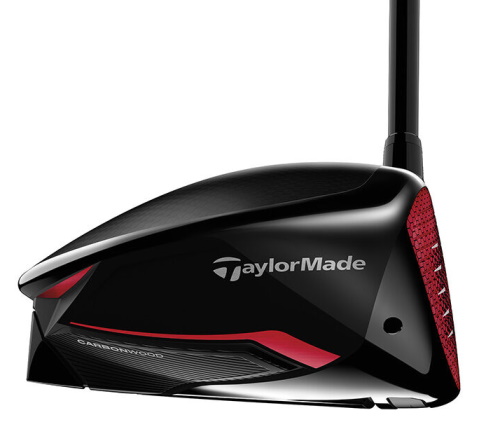
Another factor worth considering is how the driver looks. Aesthetic is one thing, but if you play a driver that doesn’t suit your eye, you’ll probably be less likely to make a good swing.
Many beginners appreciate the confidence that a large 460 CC head with an elongated crown provides.
Related to this are adjustability features, the main ones being movable sole weights and adjustable hosels. These allow you to alter the loft & lie, introduce draw bias, or add stability depending on the position of the weights.
Adjustability is very beneficial in drivers because it gives you the opportunity to dial in a setting that works best for you, even if you might not have been seeing great performance initially. However, it does tend to come at the cost of less forgiveness because of the added weight.
5. Shaft

The shaft can make or break your success with a driver because of how much it influences swing weight, feel, trajectory and spin.
Graphite shafts have pretty much become the standard for today’s drivers (as opposed to steel shafts) because their increased torque, increased flex, and lighter weight help promote launch and speed.
Having said that, choosing the right shaft is a highly individual matter. These days, manufacturers pair modern drivers with one or more stock shaft options that tend to appeal to a wide range of golfers, but custom shafts are usually available as well.
The two main things to keep in mind when choosing a shaft are the weight and the flex.
If a shaft is too heavy for you, it will likely result in less control, less club head speed, and an excessively low launch. If a shaft is too light for you, it can result in excessively high launch and spin as well as a lack of precise contact with possible deceleration in the downswing.
The shaft flex that suits you is generally dependent on your swing speed, with lower swing speeds calling for more flex and higher swing speeds calling for less flex.
Playing a flex that doesn’t match your swing speed can result in sub-optimal ball flights. But if you’re in doubt, it’s always better to err on the side of more flexibility.
Beginners shouldn’t worry too much about shaft flex when getting their first driver because they don’t know what swing speed they will eventually settle into. Over time, they will start to understand what flex gives them the best results.
6. Price

Drivers are pretty expensive these days, and not everyone can afford ones that cost $600 or more. Fortunately, there are options that cost well below this amount.
As a general rule, the older the driver model, the better the deals you can find on it. And it’s not at all uncommon to find that you perform better with a $300 driver than a $600 driver.
Because beginners are just starting out, they usually need to learn how to make decent contact with the ball before they can gain a better idea of what type of driver is best for them. This is why they should not overspend on their first driver, but rather get something affordable and see how their needs evolve with time.
In this guide, we have included driver models that span a range of different prices and brands. But the great thing is that there are ways to reduce both the final cost and risk of the purchase.
For example, one of our top recommended online golf equipment stores, Global Golf, offers club trade-ins as well as a program called Utry that lets you try a driver before you buy it. There has never been this much allowance for finding your ideal clubs, and you should take advantage.
Conclusion
A reliable, quality driver can be a huge boon to a golfer’s toolkit. Finding a model that does the job you want it to do as a beginner is certainly possible with a little bit of research.
At the end of the day, beginners should work within their budget, and beyond looking for decent forgiveness, launch, and light weight, they should not overthink which driver to play.
Once a beginner has settled into their swing, they can think about upgrading to a top Callaway, TaylorMade or Titleist model depending on their own individual needs.
Each of the driver models reviewed above deliver exceptional performance. We’ve given you the information you need to make a decision; now it’s up to you to go the rest of the way.
It is highly recommended to read consumer and professional reviews to acquire some useful insights as to how a driver actually performs. This will help you a lot in the decision-making process.
Thanks for reading this guide. Which driver are you interested in as a beginner? Do you have any questions? Feel free to leave a comment down below.

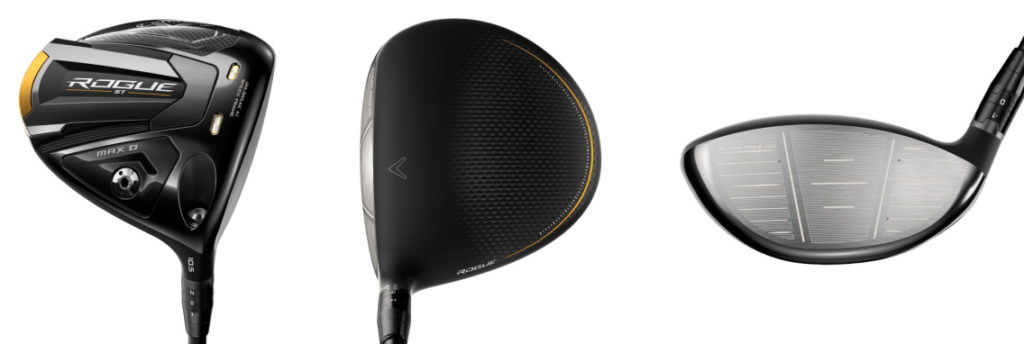

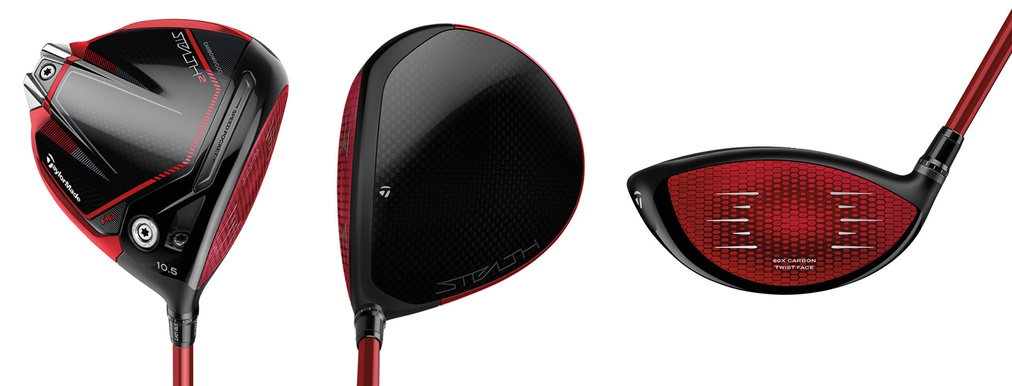
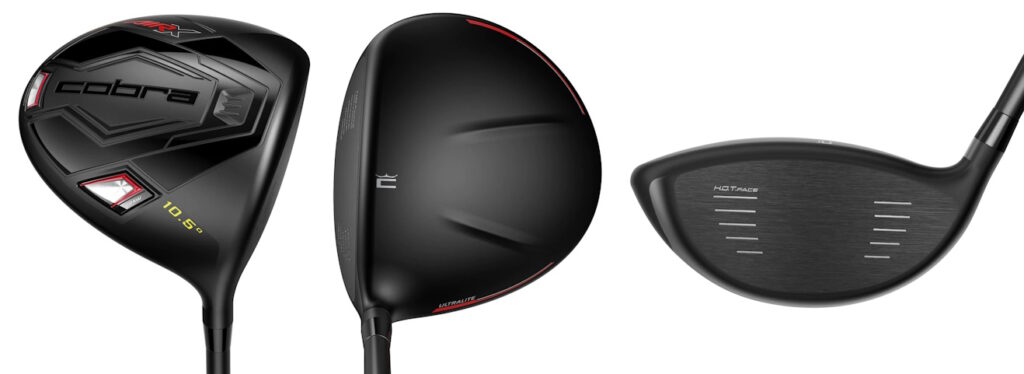

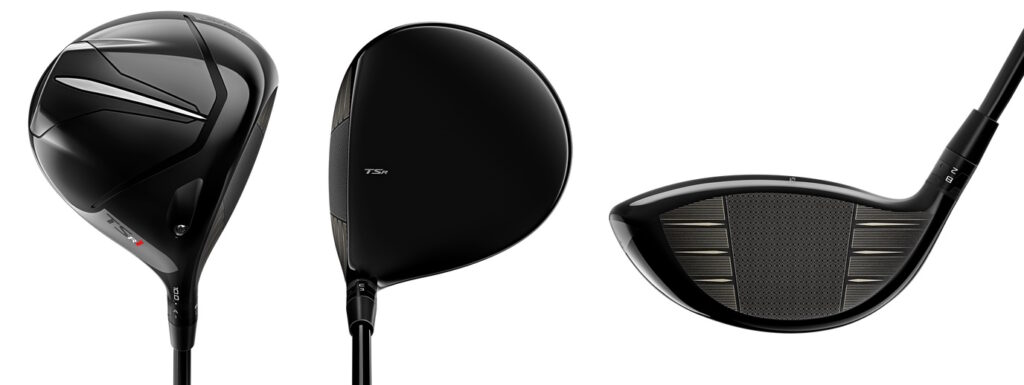

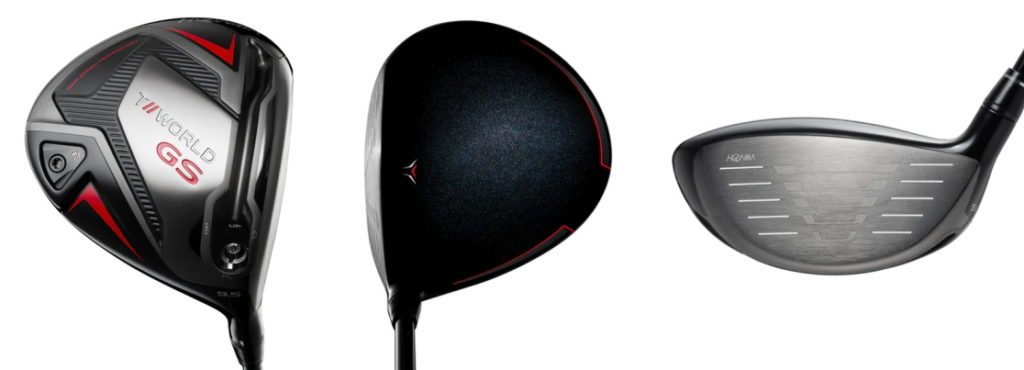


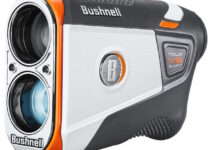
De Titleist TSR2 gekocht en echte een aanrader!
Thanks for providing this comprehensive guide on the best golf drivers for beginners. As someone who is just starting out in golf, I find this information extremely helpful in making an informed decision on which driver to invest in.
The emphasis on features such as a forgiving face, high launch properties, and a draw bias for correcting slices resonates with me as a beginner. It’s reassuring to know that these drivers are designed to assist with making solid contact with the ball and improving my overall performance on the course.
I appreciate the inclusion of various brands and models in your top picks. It gives me a range of options to consider and allows me to explore different drivers that align with my preferences and budget.
One driver that caught my attention is the Callaway Rogue ST MAX D Driver. Could you please provide more details on why it is your top recommendation for beginners? What specific features make it stand out, and how does it benefit golfers who are still developing their skills?
Hey there, thanks for the kind comment. The Rogue ST MAX D driver got super high marks in our review of the club, and it delivers in spades pretty much all the things that are most beneficial to the typical beginner: an easy launch, tons of forgiveness, and a strong draw bias. Callaway’s modern driver tech is impressive and unique (like the Jailbreak A.I. Speed Frame), and we have found that so many people do really well with their clubs.